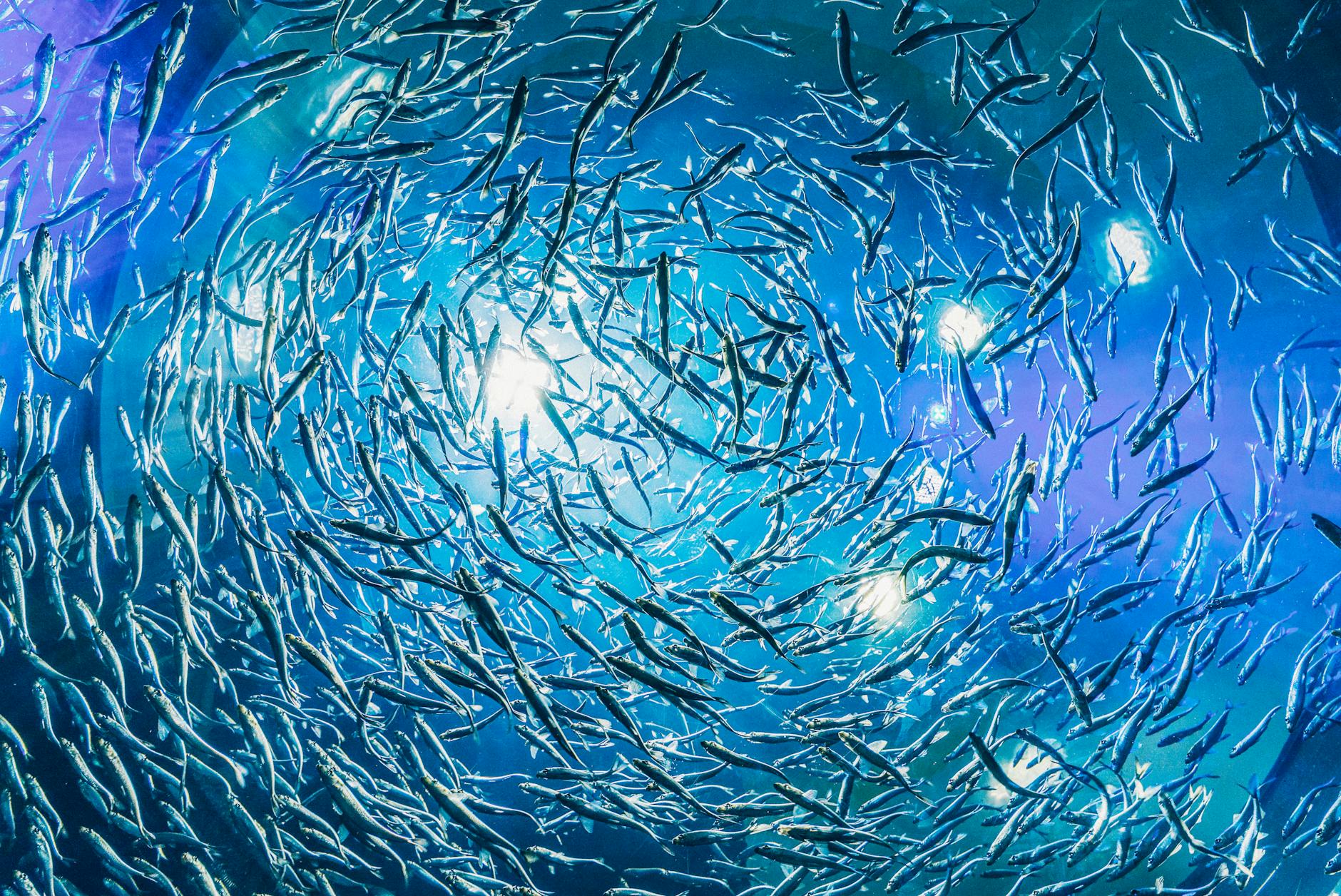The fascinating world of collective nouns adds richness and precision to our language, particularly when describing groups of fish. These specialized terms not only enhance our vocabulary but also provide insights into fish behavior and characteristics.
Basic Collective Nouns for Fish
The most common and widely accepted collective nouns for fish are school and shoal. While often used interchangeably, they have subtle differences[2]:
- A school implies a highly organized group of fish swimming in unison
- A shoal refers to a looser gathering of fish for social purposes
Primary Collective Terms
| Term | Usage | Example |
|---|---|---|
| School | Coordinated movement | A school of tuna moved gracefully |
| Shoal | Social gathering | A shoal of bass near the reef |
| Fry | Young fish | A fry of salmon in the stream |
| Draft | General group | A draft of fish in the bay |
Species-Specific Collective Nouns
Different fish species have unique collective nouns that often reflect their characteristics or behavior[1]:
Predatory Fish
- Shiver – for sharks
- Battery – for barracudas
- Flotilla – for swordfish
Reef Fish
- Company – for angelfish
- Party – for rainbow fish
- Float – for tuna
Bottom Dwellers
- Fever – for stingrays
- Cast – for crabs
- Bed – for eels
Contextual Collective Nouns
The choice of collective noun can vary depending on the context and situation in which fish are observed.
By Location
- Bank – fish in shallow waters
- Haul – fish caught in nets
- Run – fish moving upstream
- Catch – fish that have been captured
By Behavior
When fish exhibit specific behaviors, different collective nouns may apply:
| Behavior | Collective Noun | Context |
|---|---|---|
| Feeding | Glut | Active feeding frenzy |
| Spawning | Cloud | During reproduction |
| Resting | Hover | Stationary groups |
| Migrating | Regiment | Organized movement |
Historical and Regional Variations
Traditional fishing communities have developed their own collective nouns over centuries. These terms often reflect local customs and observations:
Traditional Terms
- Draught – historical British term
- College – used in medieval texts
- Troop – common in maritime literature
Regional Variations
Different English-speaking regions have developed unique collective nouns:
“In the North Atlantic, fishermen often refer to a ‘company’ of cod, while Pacific fishers might use ‘squadron’ for the same species.”
Scientific Usage
In scientific literature, researchers use specific terminology:
- Aggregation – general term for any fish group
- Biomass – when referring to quantity
- Population – for studying demographics
Usage in Literature and Media
Writers and journalists often employ creative collective nouns to add color and precision to their descriptions. These terms have become increasingly important in nature documentaries and wildlife writing.
Literary Applications
The careful selection of collective nouns can enhance descriptive writing:
- Shimmer of herring (reflecting their silvery appearance)
- Dance of minnows (describing their movement)
- Parade of lionfish (emphasizing their majestic appearance)
Common Mistakes and Proper Usage
Frequent Errors to Avoid
| Incorrect Usage | Correct Usage | Explanation |
|---|---|---|
| A group of fish | A school of fish | More precise and proper |
| A bunch of sharks | A shiver of sharks | Species-specific term |
| A herd of tuna | A flotilla of tuna | Aquatic-appropriate term |
Grammar Considerations
When using collective nouns, proper subject-verb agreement is essential:
- Singular verb when referring to the group as a unit
- Plural verb when emphasizing individual actions
Example Sentences with Bold Elements
- “The school of mackerel moved as one entity through the crystal-clear water.”
- “A shiver of sharks circled beneath our boat, their fins breaking the surface.”
- “The drift of bass was spotted near the coral reef.”
- “A magnificent regiment of salmon was making its way upstream.”
- “The cloud of anchovies scattered when the predator approached.”
- “A glut of piranhas was feeding frantically in the murky waters.”
- “The hover of parrotfish remained motionless near the coral head.”
- “A battery of barracudas patrolled the reef’s edge.”
- “The company of angelfish dispersed among the sea anemones.”
- “A fever of stingrays glided gracefully across the sandy bottom.”
- “The draft of cod was visible through the clear Arctic waters.”
- “A shimmer of sardines created a living curtain in the ocean.”
- “The parade of lionfish drifted majestically through the reef.”
- “A college of whitebait darted through the shallows.”
- “The run of steelhead was particularly strong this season.”
- “A float of tuna circled beneath the fishing boats.”
- “The bed of eels writhed through the underwater caves.”
- “A shoal of herring reflected the morning sunlight.”
- “The troop of groupers maintained their position against the current.”
- “A cloud of minnows swirled in the crystal-clear pond.”
Key Takeaways
Understanding collective nouns for fish enhances both written and spoken communication about marine life. These terms provide precision and poetry to descriptions, whether in scientific writing, literature, or everyday conversation. The proper use of these collective nouns reflects not only linguistic sophistication but also a deeper appreciation of marine behavior and characteristics.
Citations:
[1] https://boatgoldcoast.com.au/collective-nouns-fish/
[2] https://collectivenounslist.com/fish/
[3] https://www.animalsandenglish.com/collective-nouns-etc71.html
[4] https://www.youtube.com/watch?v=_0vDz9TkC-8
[5] https://reef-world.org/blog/collective-nouns
